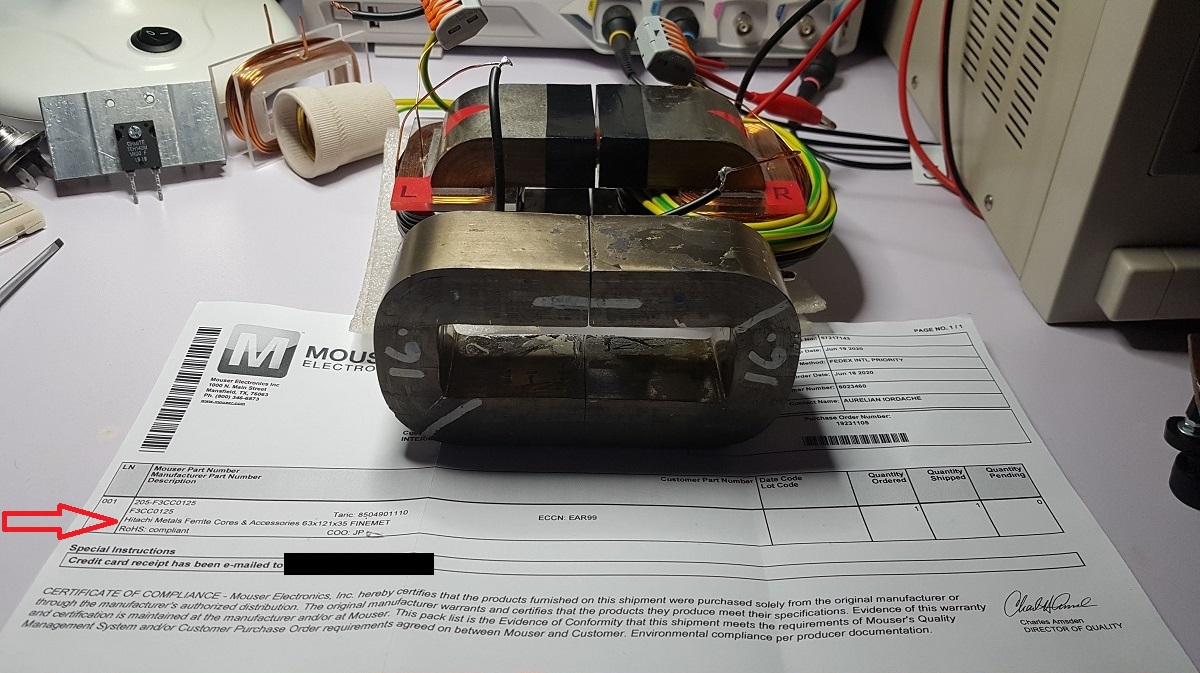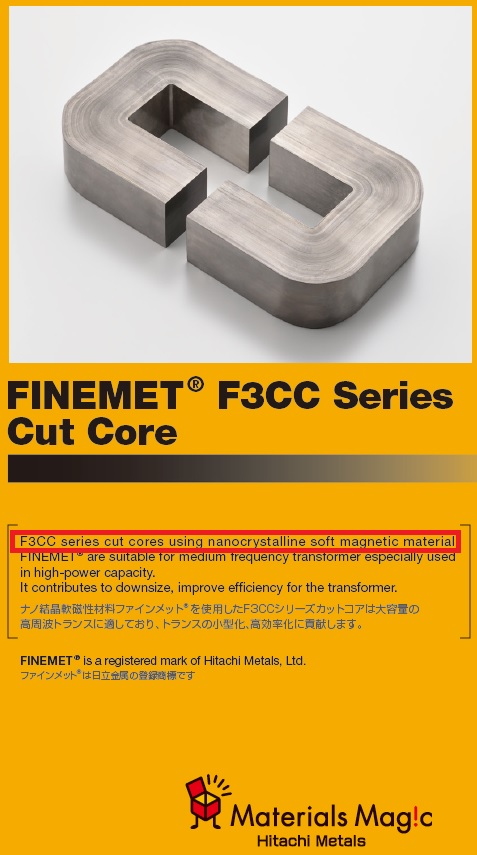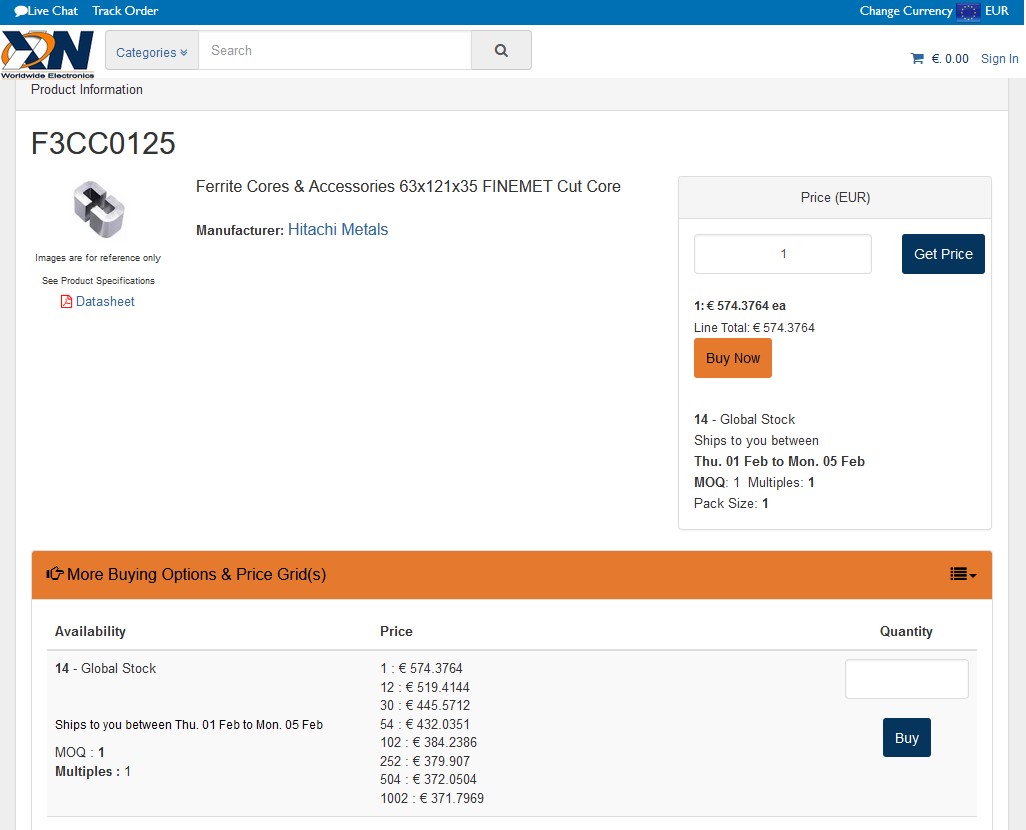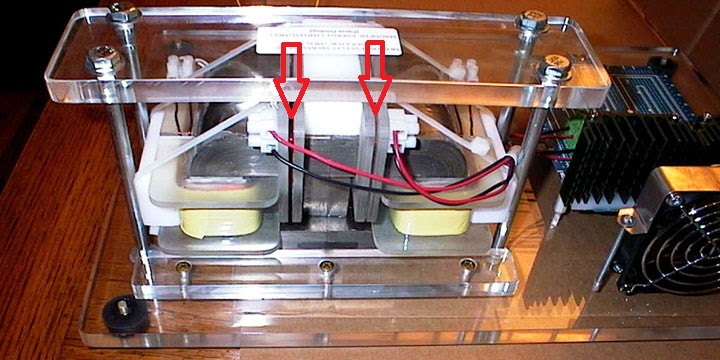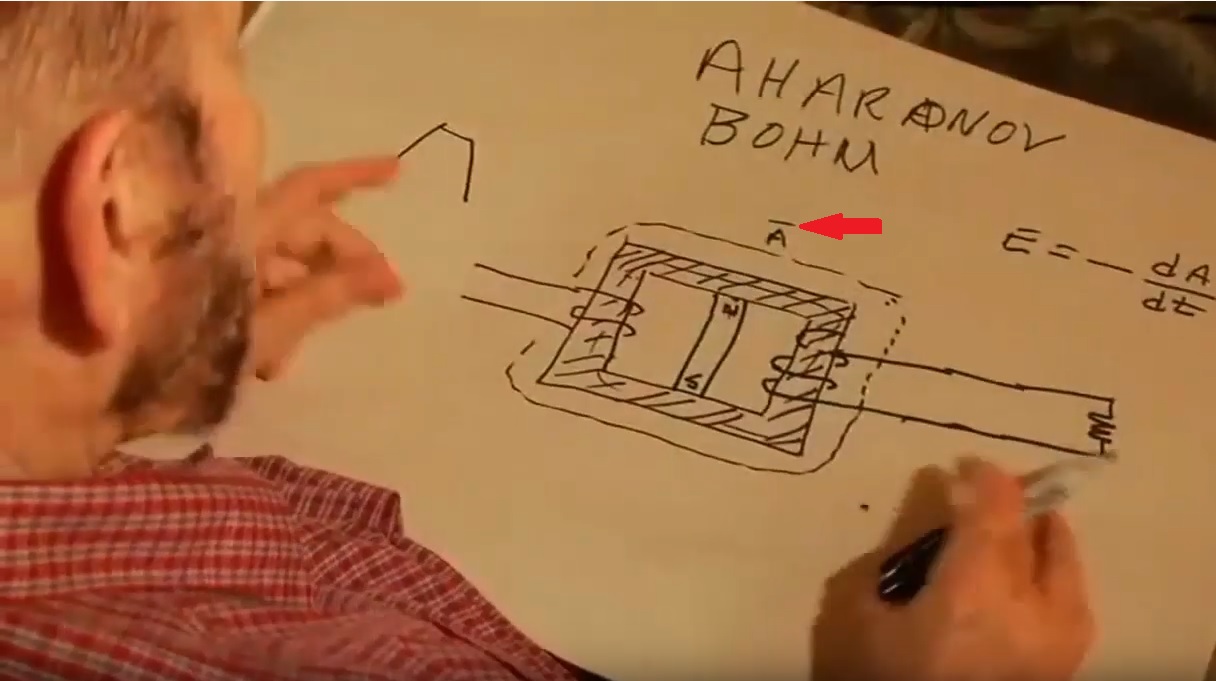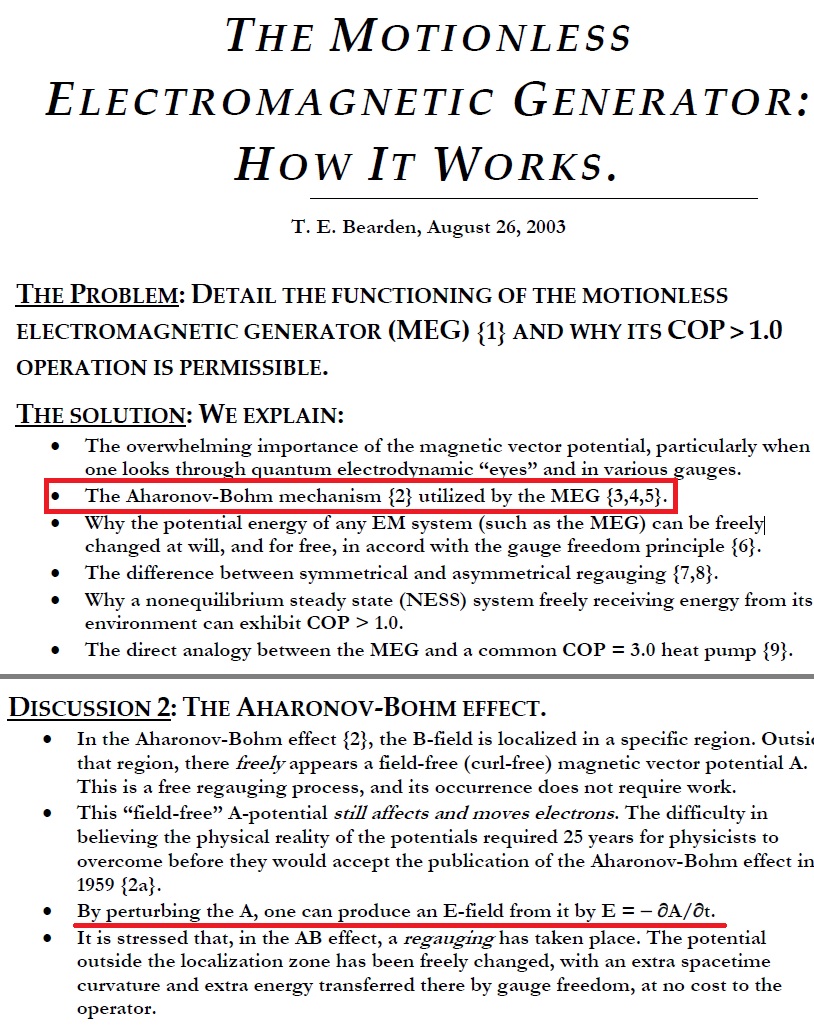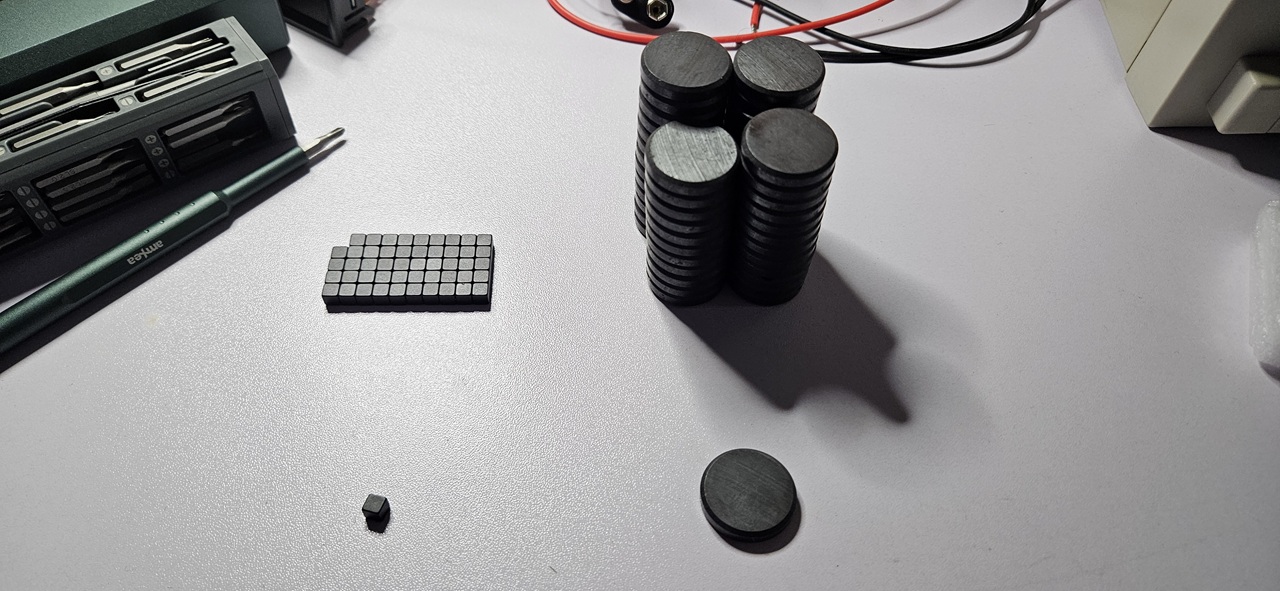Dear Vlad,
The only thing necessary to answer is item 7, and we will point out that we use a scheme where the magnitude of the collected output energy depends on the rate of change of the input energy, not the magnitude of the input energy.
He has only read the first patent since the second one is still processing; a continuance has also been filed, and a second PPA is already filed, to be turned into a second patent or change to the first. We now see two additional patent applications to be filed, because of the rich physics that gets invoked. So the first patent does not yet completely describe the MEG, but only one part of it.
One does not get overunity from an ordinary transformer. Yet a PART of the MEG has a transformer function, altered so the output energy magnitude does not depend on the input energy magnitude, but on the rise time and decay time of the input signal pulses. But that's only part of it.
We have stated quite clearly in several releases that the core material (covered in our second patent) enforces the Aharonov-Bohm effect. That effect is not in electrical engineering and classical transformer theory at all, but it is in thousands of papers in the hard physics literature. It's good physics, but not yet included in electrical engineering. Yet the AB effect does appear in the sophomore physics book that the electrical engineer studies. He is just led to believe it has absolutely nothing to do with electrical power systems. He is led to believe wrong.
By localizing ALL the magnetic B-field flux from the permanent magnet in the core material, we have all the normal magnetic B-field energy from the permanent magnet handy in that core location to work with. In addition, nature freely adds the curl-free magnetic vector potential A in the space outside the core. So we have that ADDITIONAL A-potential energy - freely furnished by the vacuum itself - to work with OUTSIDE THE CORE as well as the normal magnetic field INSIDE THE CORE.
Don't worry; quantum field theory already assumes a gauge freedom axiom, which further assumes the ability to FREELY change the potential - and therefore the potential energy - of any EM system at will.
We then perturb both the confined B-field and the external A-potential. Check it out, each perturbation produces an electric field, proportional to the TIME RATE OF CHANGE of the perturbation energy, NOT to the magnitude of the perturbation energy. The time rate of change of the electric fields then produce magnetic fields, and so on as expected.
So we can make large EM field outputs from small EM energy input, by simply adjusting the input wave form's rise time and decay time.
We are able to use both the perturbed B-field flux, as in a normal transformer, and the additional perturbation fields produced outside the transformer. We can easily increase the magnitude of the generated perturbation fields without increasing the magnitude of the input energy.
The usable output energy then depends on how much of that greatly increased EM field energy we then intercept and collect, from these greatly increased PERTURBATION fields. Since the magnitudes of the perturbation fields do not depend on the magnitude of the input energy, then the magnitude of the collected field energy does not depend on the magnitude of the input energy.
', "We run that by again: In the MEG, the magnitude of the output energy does not depend on the magnitude of the input energy. That's totally in violation of ordinary transformer theory.
In short, we bypass an ordinary transformer's necessity of dissipating as much energy in the primary section as is dissipated in the secondary section. That's because a large part of the secondary fields produced in the MEG do not couple back to the input section, in violation of the operation of a normal transformer. It is that "back coupling" of the secondary fields into the primary circuit"
In essence, we pay to "switch" and "gate" some free energy flows provided from the vacuum itself; we do not pay to furnish the energy in those flows! We have an open system far from thermodynamic equilibrium in an active vacuum environment. The vacuum freely furnishes that energy, and we trick it into furnishing more to the MEG than it furnishes to a standard transformer.
', 'The AB effect that tricks the vacuum into furnishing additional EM energy is not in the classical EM model or conventional electrical engineering circuit theory. Something like 50,000 or so, in the full generalization of the theory. This has been around since 1959; but its potential for electrical power systems just was not noticed by electrical engineers. Indeed, the AB effect itself was little noticed by electrical engineers except as an idle curiosity.
If one wishes to understand the MEG, one must go beyond U(1) electrodynamics and classical electrical engineering, particularly classical power engineering. And one must recognize that this first patent is just that: the first of a string of them, with a second already filed.
If one is not familiar with the AB effect, I strongly suggest one study the physics literature dealing with it first, before seriously tackling understanding the MEG's operation.
Apparently we were just the first researchers to recognize that the AB effect had great potential for power systems, and particularly for overunity systems of several kinds. There are already several kinds of MEG, not just one, depending on what is optimized etc.
Now we strongly call attention to something else in conventional electrical engineering. If one merely places a charged capacitor on top of a permanent magnet, so that the E-field of the capacitor is at right angles to the H-field of the magnet, that silly thing will sit there and pour out EM energy indefinitely, perfectly freely, by the conventional Poynting equation S = E X H which has been optimized.
That's how "difficult" it is to get extra energy flow from the vacuum. It's a piece of cake, and can be done for a dollar - anywhere, anytime in the entire universe. One can easily extract as much EM energy flow as one wishes.
That silly little capacitor and magnet already invalidates everything we were told in university about how difficult it will be to ever extract usable EM energy from the vacuum. There is also a form of the Poynting equation for a single dipole, as just the charged capacitor or the permanent magnet. It's already known and accepted.
', "Yet engineers believe that they have to input all the EM energy to a circuit that one can get in the circuit to use. That's not only wrong, it's a bald-faced lie after more than 100 years of that dogma (the Poynting theory dates back to the 1880s).
In the MEG, when we perturb the B-flux with shaped perturbation input energy signals, and the A-potential as well, we create large E-fields. Voila! Real S = E X H energy flow, which now only requires a little ingenuity to intercept, capture, and use. Else one has to get after the universities to destroy the Poynting theory! So we get our extra S = E X H in the MEG and Poynting holds okay. Also, it's AC and so that is much easier to intercept, collect, and use.
A real advantage of the permanent magnet in the magnetic circuit is that the magnetic dipole - in this case, the permanent magnet - does not and cannot be destroyed when the magnetic flux returns back through the dipole, as contrasted to a standard closed current loop electrical circuit which uses half the energy collected in the external circuit to destroy the source dipole in the generator. So our "primary source dipole" is nearly indestructible, so long as no excessive heating or great mechanical shock is received.
Now to critique the standard "wisdom" of what powers circuits. Generators do not power their circuits with transduced input shaft mechanical energy! And that is all that a generator does. It makes that source dipole. That is all that burning the hydrocarbon to make steam to run the turbine to crank the shaft of the generator does. That is all that building a dam to use hydroturbines to crank the generator does. That is all that a windmill uses the wind for. None of all that adds a single joule of EM energy to the external power line. All of the oil and coal and gas burned, and nuclear fuel rods used, and dams built, and windmills built, have never from the heat energy or wind energy or water energy produced a single joule of energy onto the power line.
If the engineers would leave that dipole intact once made inside the generator, a little initial rotation of the generator to get the dipole made ONCE would be all that would ever be needed. But they use the closed current loop circuit, which forcibly drives every "depotentialized" electron in the ground return line back through that source dipole in the generator, continually destroying the source dipole. So the engineers have to keep cranking the shaft of the generator so they can keep remaking and remaking the source dipole inside the generator. No source dipole, no energy onto the external circuit.
The source dipole, once made, extracts that energy directly from the vacuum, transduces it into real energy, and passes that real, observable EM energy out onto the external power line to power it. None of the shaft input energy got transduced to be sent out on the power line.
To understand that, please read why Lee and Yang were awarded the Nobel Prize in 1957, for their work in broken symmetry. One of the broken symmetries long proven in particle physics is the broken symmetry of opposite charges - such as on the ends of a dipole - specifically, that source dipole in the generator, once it is made. That "broken symmetry of the source dipole following from the broken symmetry of opposite charges" has an exact meaning in particle physics, but one that does not even exist in the electrical engineering departments and in the electrical engineering model. When connected to an external circuit, THIS SOURCE DIPOLE - ONCE FORMED - EXTRACTS FROM THE VACUUM AND POURS OUT OF THE GENERATOR TERMINALS A VAST FLOOD OF EM ENERGY, FILLING ALL SPACE AROUND THAT EXTERNAL CIRCUIT AND FLOWING GENERALLY PARALLEL TO THEM. The circuit intercepts a small part of that energy flow in surrounding space, and diverges that part (the Poynting component) into the circuit to power the electrons.
Every circuit we ever built, and those built today, are powered by energy directly from the vacuum, via the broken symmetry of the source dipole or dipolarity - and they always have been and always will be. And Kron was one of the most able electrical scientists we ever produced - some say the greatest.
Sadly, there is not now and there never has been a single electrical engineering department in the Western world which understood or taught what actually powers an electrical circuit in the first place. It isn't the generator dissipating its internal magnetic field energy or the battery dissipating its chemical energy. Yet the basis for the vacuum powering the external circuit via the broken symmetry of the internal source dipole has been in particle physics for 45 years, with Nobel Prize awarded. Inexplicably, it still is not included in electrical engineering, and particularly in power engineering.
The Maxwell-Heaviside-Lorentz model used in electrical engineering assumes an inert environment (the vacuum) which has been falsified for more than half a century. It also assumes a flat local spacetime, which has been falsified by general relativity for approaching a century. If one assumes the external environment is never active, then one does not model nature, as proven in spades in particle physics.
Why our electrical engineering curricula have not been upgraded to incorporate what has already been discovered and proven in particle physics is a giant enigma. Why the more than a century old U(1) electrodynamics has not been upgraded to include the proven active vacuum energy exchange with the system or the proven local curvature of spacetime energy exchange with the system whenever the energy density changes in a local region such as a power system, is also a giant enigma. Lorentz threw out the "windmills in the wind" by putting the windmills in a closed barn, as an analogy! In short, our electrical engineers are taught to just arbitrarily modify the model to select only those Maxwellian systems in equilibrium with their active environment (the active vacuum).
To use a phrase from Tesla, such a continuing mess - with its resulting giant pollution of the biosphere, death of species, rape of the planet, and a coming energy crisis that may destruct many of the national economies - may be "the most inexplicable aberration of the scientific mind ever recorded in history".
Best wishes,
Tom Bearden
As we know Tom's website cheniere.org was shutdown but it's still present in the Wayback Machine here:

